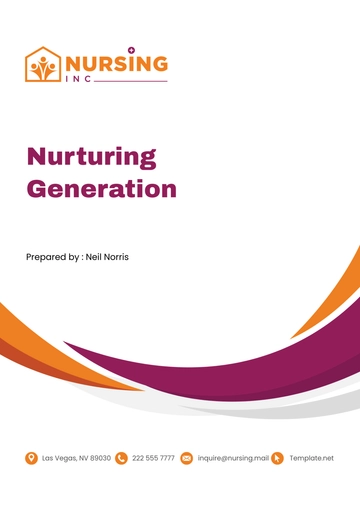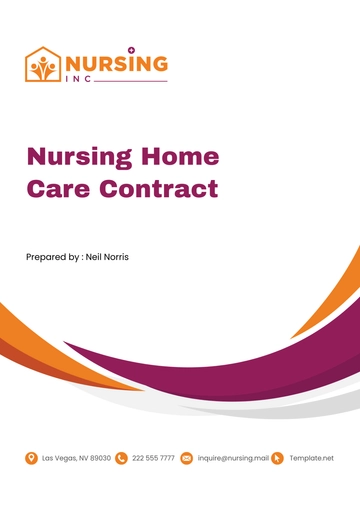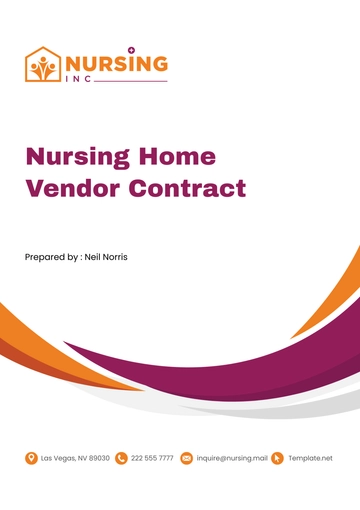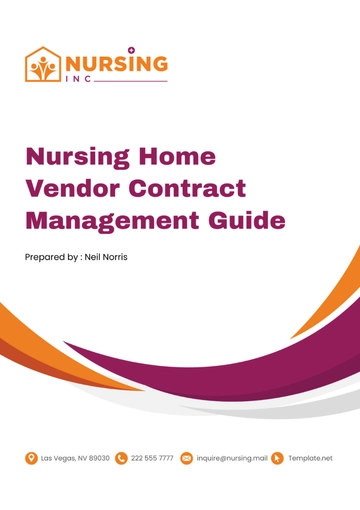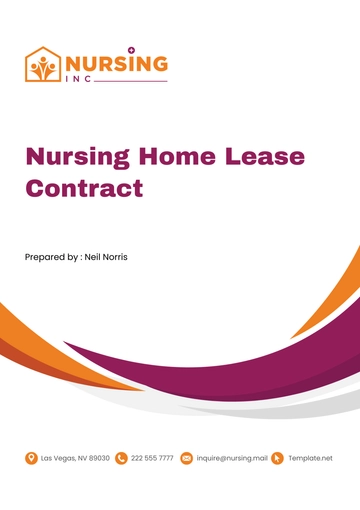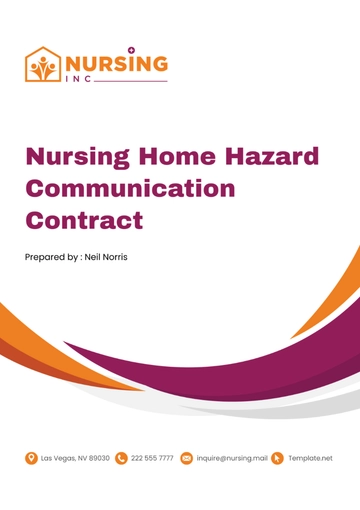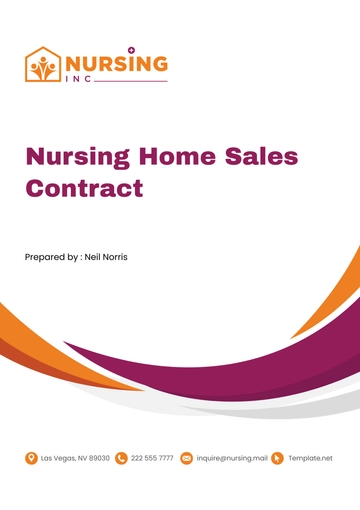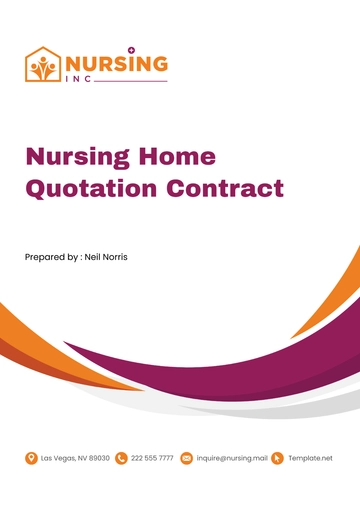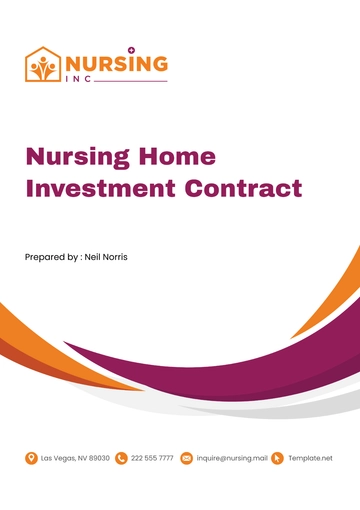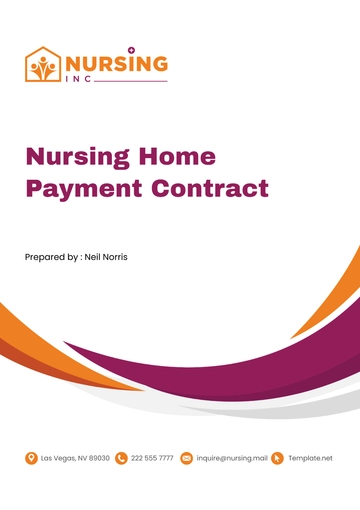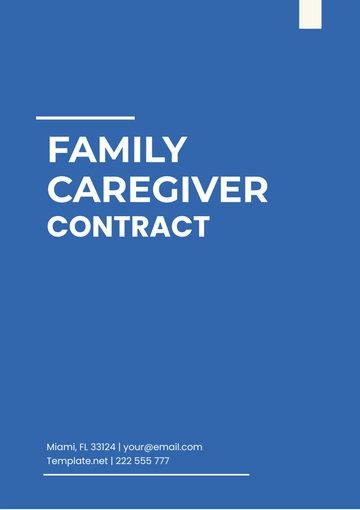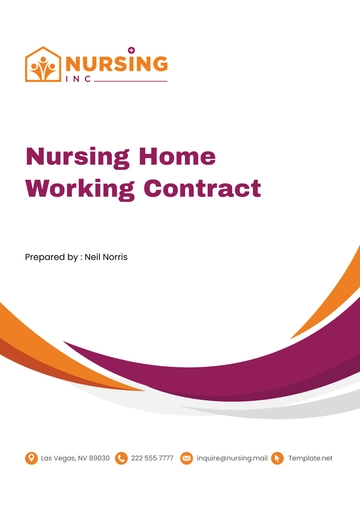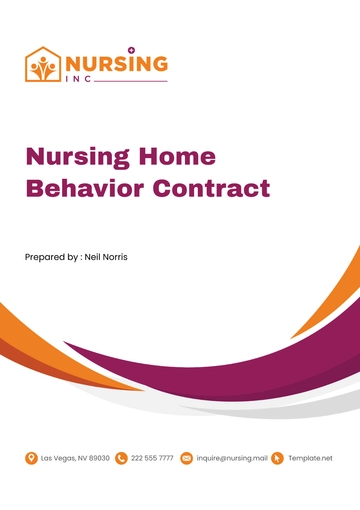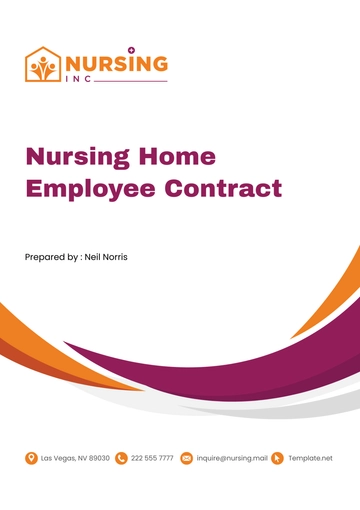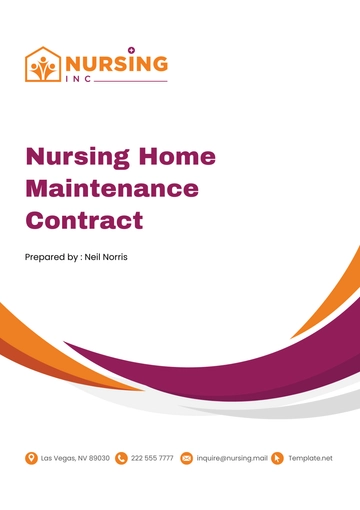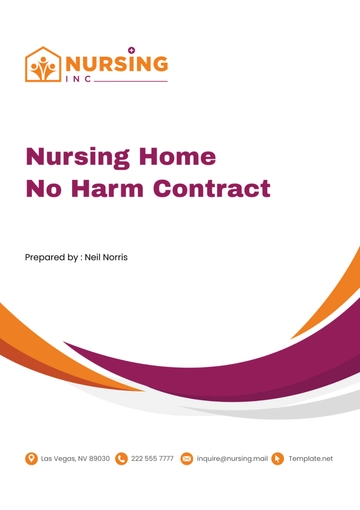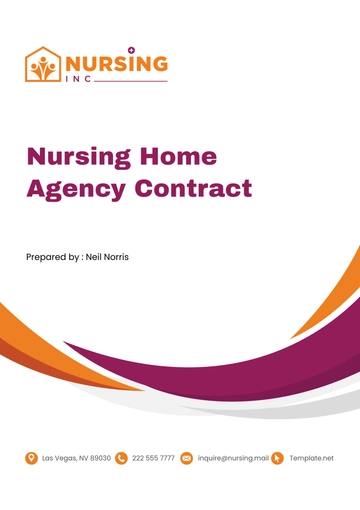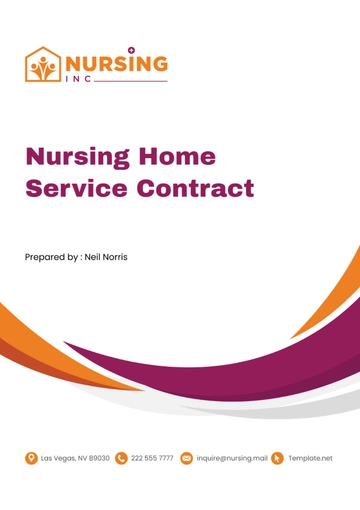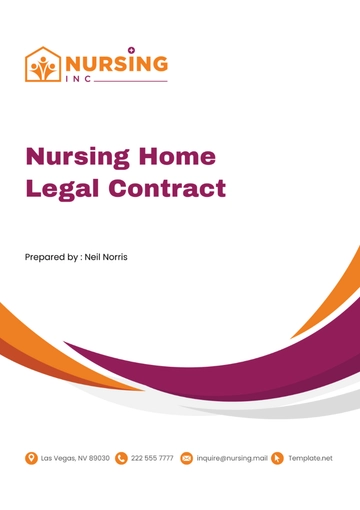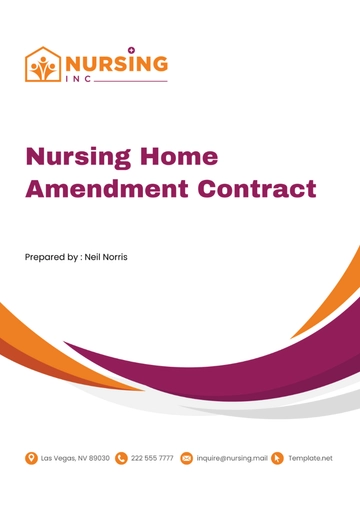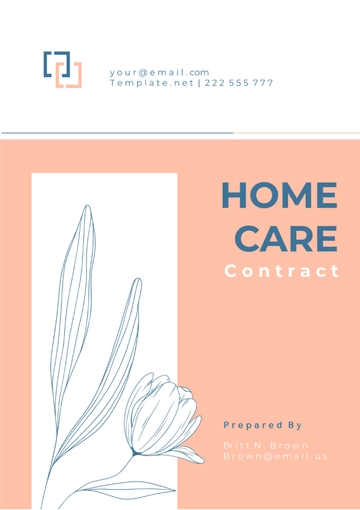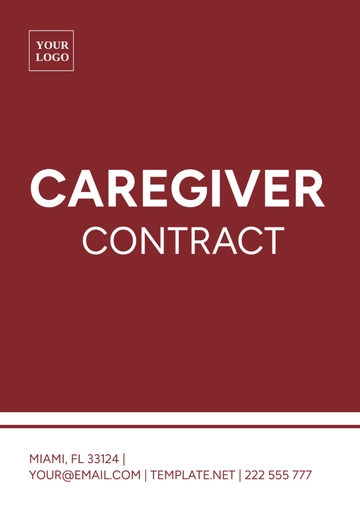Free Nursing Home Vendor Contract Management Guide
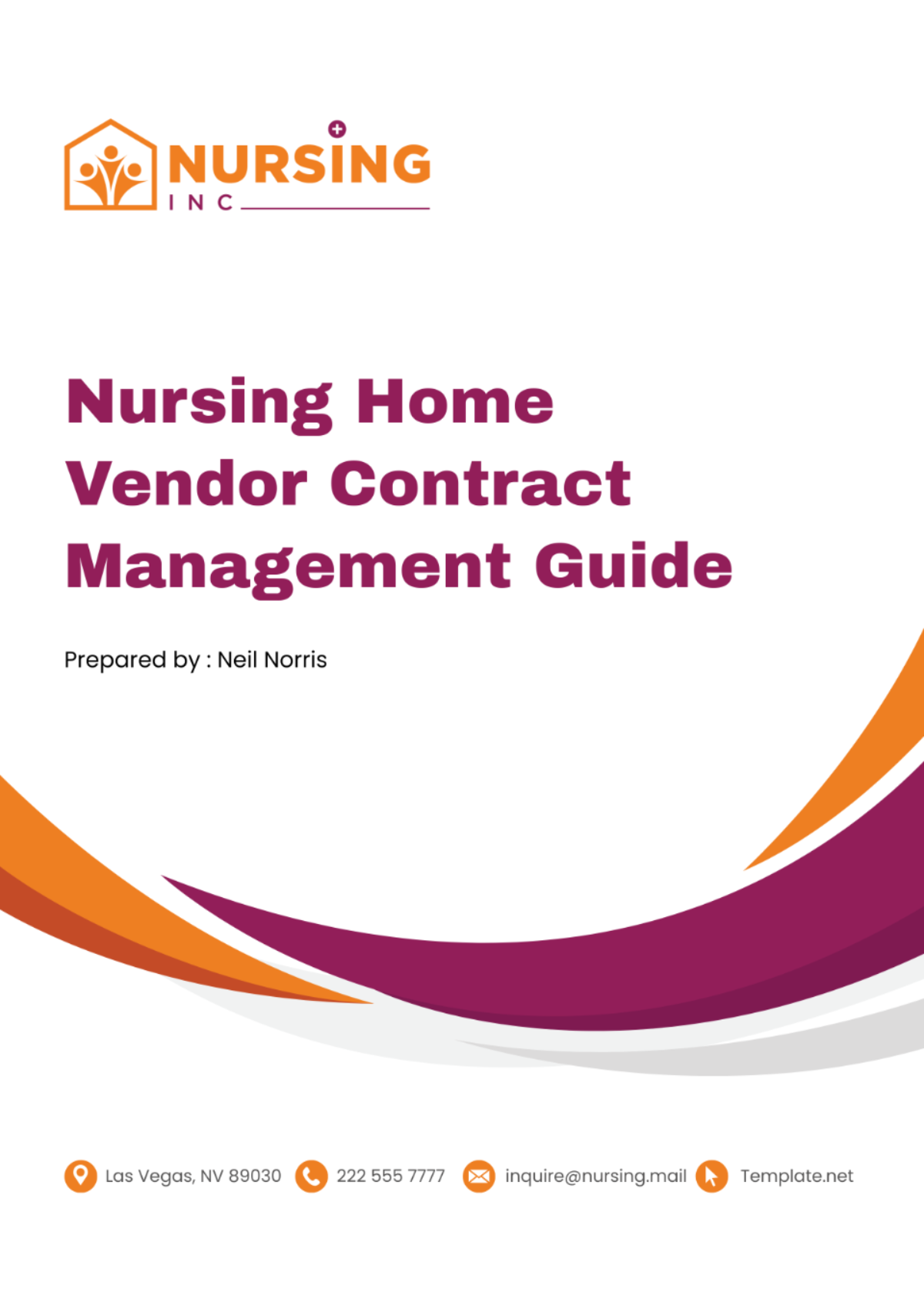
I. Introduction
A. Overview
In the dynamic healthcare environment, nursing homes rely on various external vendors to provide essential goods and services that contribute to resident care and facility operations. Effective vendor contract management is essential to ensure that these partnerships are well-structured, mutually beneficial, and compliant with regulatory standards. This guide serves as a comprehensive resource for nursing home administrators, procurement managers, and other stakeholders involved in the vendor contract management process. By following the guidelines outlined in this document, nursing homes can streamline their vendor management practices, mitigate risks, and optimize resource allocation, ultimately enhancing the quality of care delivered to residents.
B. Key Terminology
Definitions
Vendor: Any external entity or individual contracted to supply goods or services to the nursing home, including but not limited to medical equipment suppliers, food service providers, and maintenance contractors.
Contract Management: The systematic process of planning, negotiating, executing, and monitoring contracts to ensure compliance with terms and conditions, optimize performance, and mitigate risks.
Service Level Agreement (SLA): A contractual agreement that defines the level of service a vendor is expected to deliver, including quality standards, response times, and performance metrics.
Compliance: The adherence to legal and regulatory requirements governing vendor activities within the nursing home, including healthcare regulations, labor laws, and safety standards.
II. Vendor Selection Process
A. Needs Assessment
Identification of Needs
Nursing home administrators and department heads collaborate to identify specific areas where external vendor services are required to support resident care, facility maintenance, and administrative functions.
Needs assessment methodologies may include staff interviews, surveys, facility inspections, and analysis of historical data on resource utilization and service gaps.
Evaluation Criteria
Cost-effectiveness: Evaluate vendor pricing structures to ensure alignment with the nursing home's budgetary constraints without compromising quality or service standards.
Quality of Service: Assess the reputation, experience, and track record of potential vendors in delivering high-quality goods and services tailored to the unique needs of nursing home residents.
Regulatory Compliance: Verify that vendors possess the necessary licenses, certifications, and insurance coverage to operate legally within the healthcare industry and comply with relevant federal, state, and local regulations.
B. Vendor Evaluation
Request for Proposals (RFPs)
Nursing home administrators develop comprehensive RFP documents outlining project requirements, evaluation criteria, submission guidelines, and contractual terms.
RFPs are distributed to a select list of pre-qualified vendors through various channels, such as online procurement platforms, industry associations, and direct outreach.
Vendor Screening
Vendor proposals are evaluated based on predefined criteria, including but not limited to pricing, quality, reliability, responsiveness, scalability, and cultural fit.
Background checks, reference checks, site visits, and interviews may be conducted to verify vendor credentials, assess past performance, and evaluate compatibility with the nursing home's mission and values.
III. Contract Negotiation and Formation
A. Contract Development
Terms and Conditions
Contractual terms and conditions should be clearly defined to establish the rights, obligations, and responsibilities of both the nursing home and the vendor. Key components include:
Scope of Services: Detailed description of the goods or services to be provided by the vendor, including specifications, deliverables, and timelines.
Pricing and Payment Terms: Agreement on pricing structures, payment schedules, invoicing procedures, and penalties for late payments.
Service Level Agreements (SLAs): Performance standards, response times, escalation procedures, and remedies for service failures.
Termination Provisions: Conditions under which either party may terminate the contract, including notice periods, termination fees, and post-termination obligations.
Confidentiality and Data Security: Measures to protect sensitive information, including HIPAA compliance, data encryption, and non-disclosure agreements.
Legal Review
It is imperative to involve legal counsel in the contract review and negotiation process to ensure compliance with applicable laws, regulations, and industry standards. Legal considerations may include:
Regulatory Compliance: Verification of vendor compliance with healthcare laws, privacy regulations (e.g., HIPAA), labor laws, and industry standards.
Risk Mitigation: Identification and mitigation of contractual risks, liabilities, indemnification clauses, and insurance requirements.
Contractual Dispute Resolution: Establishment of dispute resolution mechanisms, such as mediation, arbitration, or litigation, to address conflicts and breaches of contract.
B. Negotiation Process
Communication Strategies
Effective communication is essential during contract negotiations to foster collaboration, transparency, and trust between the nursing home and the vendor. Key strategies include:
Active Listening: Attentive listening to understand the needs, concerns, and objectives of both parties.
Transparency: Open and honest communication about expectations, constraints, and areas of negotiation.
Compromise: Willingness to find mutually acceptable solutions through compromise and negotiation.
Documentation: Clear documentation of negotiation outcomes, revisions, and agreements to prevent misunderstandings or disputes.
Finalizing the Contract
Once negotiation terms are agreed upon, the contract should be finalized and executed by authorized representatives of both parties. Finalization steps may include:
Review and Approval: Thorough review of the final contract by all stakeholders, including legal counsel and senior management, for approval.
Execution: Signing of the contract by authorized signatories, with copies distributed to all relevant parties.
Implementation Planning: Coordination of implementation activities, such as onboarding, training, and resource allocation, to ensure smooth contract rollout.
Monitoring and Compliance: Establishment of monitoring mechanisms to track contract performance, enforce terms, and address any deviations or non-compliance.
IV. Contract Management and Compliance
A. Implementation
Onboarding Process
Upon contract finalization, the nursing home and the vendor should collaborate to establish an effective onboarding process. Key steps include:
Orientation: Introduction to nursing home policies, procedures, and expectations for vendor conduct and performance.
Training: Provision of necessary training and resources to familiarize vendor personnel with facility operations and resident needs.
Integration: Seamless integration of vendor services into existing workflows, systems, and communication channels.
Performance Monitoring
Ongoing monitoring of vendor performance is essential to ensure adherence to contract terms and service level agreements. Monitoring activities may include:
KPI Tracking: Regular tracking and analysis of key performance indicators (KPIs) to assess vendor performance against predefined benchmarks.
Feedback Mechanisms: Establishment of feedback mechanisms, such as surveys, meetings, and incident reporting systems, to solicit input from stakeholders and address concerns promptly.
Performance Reviews: Periodic performance reviews and evaluations to identify areas for improvement, recognize achievements, and align vendor objectives with nursing home goals.
B. Compliance Management
Regulatory Requirements
Compliance with regulatory standards is paramount to ensure the safety, privacy, and well-being of nursing home residents. Compliance management efforts may include:
Regular Audits: Conducting internal audits and external assessments to verify compliance with healthcare laws, accreditation standards, and government regulations.
Policy Updates: Keeping abreast of regulatory changes and updating policies, procedures, and practices accordingly to maintain compliance.
Training and Education: Providing ongoing training and education to staff and vendors on regulatory requirements, best practices, and emerging trends in the healthcare industry.
Auditing and Reporting
Robust auditing and reporting mechanisms are essential to track compliance efforts, identify areas of non-compliance, and implement corrective actions. Key activities include:
Audit Planning: Developing audit plans, checklists, and schedules to systematically assess vendor activities, records, and processes.
Documentation: Maintaining accurate and comprehensive records of audit findings, corrective actions, and compliance measures for regulatory reporting and internal review.
Reporting: Generating regular compliance reports for senior management, regulatory authorities, and other stakeholders to demonstrate adherence to legal and contractual obligations.
V. Contract Renewal and Termination
A. Renewal Process
Evaluation of Performance
Before renewing a vendor contract, it's crucial to assess the vendor's performance to ensure continued alignment with the nursing home's needs and standards. This evaluation may include:
Performance Metrics: Reviewing key performance indicators (KPIs) established in the contract to gauge the vendor's effectiveness in meeting service level agreements (SLAs) and performance targets.
Stakeholder Feedback: Gathering feedback from nursing home staff, residents, and other stakeholders regarding their satisfaction with the vendor's services, responsiveness, and overall performance.
Compliance Assessment: Conducting audits or assessments to verify the vendor's adherence to regulatory requirements, contractual obligations, and quality standards.
Financial Analysis: Evaluating the financial impact of renewing the contract, considering factors such as pricing changes, budget constraints, and cost-effectiveness compared to alternative vendors.
Renegotiation Strategies
If the vendor's performance meets expectations and the contract renewal is warranted, the nursing home may engage in renegotiation discussions to optimize the terms of the renewed agreement. Strategies may include:
Performance Incentives: Introducing performance-based incentives or bonuses to motivate the vendor to exceed performance targets and deliver exceptional service.
Contractual Enhancements: Identifying areas for improvement or additional services and negotiating modifications to the contract to better align with evolving needs and objectives.
Cost Optimization: Negotiating cost reductions, discounts, or value-added services to improve the contract's financial terms while maintaining service quality and compliance.
Long-Term Partnerships: Exploring opportunities for long-term partnerships or multi-year contracts to provide stability and foster a mutually beneficial relationship between the nursing home and the vendor.
B. Termination Procedures
Contractual Obligations
In cases where contract renewal is not feasible or advisable, the nursing home may need to initiate the contract termination process. It's essential to adhere to contractual obligations and legal requirements throughout this process, including:
Notice Period: Providing sufficient notice to the vendor in accordance with the contract terms, typically ranging from 30 to 90 days before the intended termination date.
Termination Fees: Understanding any applicable termination fees or penalties specified in the contract and determining the financial implications of ending the agreement prematurely.
Transition Planning: Collaborating with the vendor to develop a transition plan outlining the steps for winding down services, transferring responsibilities, and mitigating disruptions to resident care.
Post-Termination Obligations: Clarifying post-termination obligations, such as return of property, data retention, and confidentiality provisions, to ensure a smooth and orderly contract conclusion.
Transition Planning
Effective transition planning is essential to minimize disruptions and ensure continuity of services during and after the contract termination. Key considerations may include:
Stakeholder Communication: Communicating the decision to terminate the contract to relevant stakeholders, including nursing home staff, residents, families, and regulatory authorities, with transparency and sensitivity.
Vendor Replacement: Identifying alternative vendors or service providers capable of fulfilling the terminated vendor's responsibilities and initiating the selection and onboarding process as needed.
Service Continuity: Implementing measures to ensure uninterrupted service delivery during the transition period, such as interim arrangements, contingency plans, and staff training.
Performance Monitoring: Monitoring the transition process closely to address any issues or challenges promptly, maintain service quality, and mitigate risks to resident care and facility operations.
VI. Conclusion
A. Summary
Recap of Key Points
This guide has provided comprehensive insights into nursing home vendor contract management, covering key aspects such as vendor selection, contract negotiation, implementation, and compliance managemen.
By following the best practices outlined in this guide, nursing homes can optimize vendor relationships, mitigate risks, and enhance the quality of care delivered to residents.
B. Future Considerations
Emerging Trends
As the healthcare landscape continues to evolve, nursing homes should stay abreast of emerging trends in vendor management, such as the adoption of technology-enabled solutions, value-based contracting models, and regulatory reforms.
By embracing innovation and adapting to industry changes, nursing homes can position themselves for long-term success and sustainability in a competitive marketplace.
Continuous Improvement
Continuous improvement is essential for nursing homes to remain agile, responsive, and resilient in the face of evolving challenges and opportunities.
By fostering a culture of continuous learning, innovation, and collaboration, nursing homes can drive operational excellence, improve resident outcomes, and achieve organizational excellence.
- 100% Customizable, free editor
- Access 1 Million+ Templates, photo’s & graphics
- Download or share as a template
- Click and replace photos, graphics, text, backgrounds
- Resize, crop, AI write & more
- Access advanced editor
Streamline vendor contracts with the Nursing Home Vendor Contract Management Guide Template from Template.net. Editable and customizable, it provides guidance for effectively managing vendor contracts in nursing home facilities. Tailor it effortlessly using our Ai Editor Tool for personalized guides. Ensure transparency and efficiency in vendor contract management with this essential template.
You may also like
- Rental Contract
- Contractor Contract
- Contract Agreement
- One Page Contract
- School Contract
- Social Media Contract
- Service Contract
- Business Contract
- Restaurant Contract
- Marketing Contract
- Real Estate Contract
- IT Contract
- Cleaning Contract
- Property Contract
- Supplier Contract
- Partnership Contract
- Food Business Contract
- Construction Contract
- Employment Contract
- Investment Contract
- Project Contract
- Payment Contract
- Student Contract
- Travel Agency Contract
- Startup Contract
- Annual Maintenance Contract
- Employee Contract
- Gym Contract
- Event Planning Contract
- Personal Contract
- Nursing Home Contract
- Law Firm Contract
- Work from Home Contract
- Software Development Contract
- Maintenance Contract
- Music Contract
- Amendment Contract
- Band Contract
- DJ Contract
- University Contract
- Salon Contract
- Renovation Contract
- Photography Contract
- Lawn Care Contract
